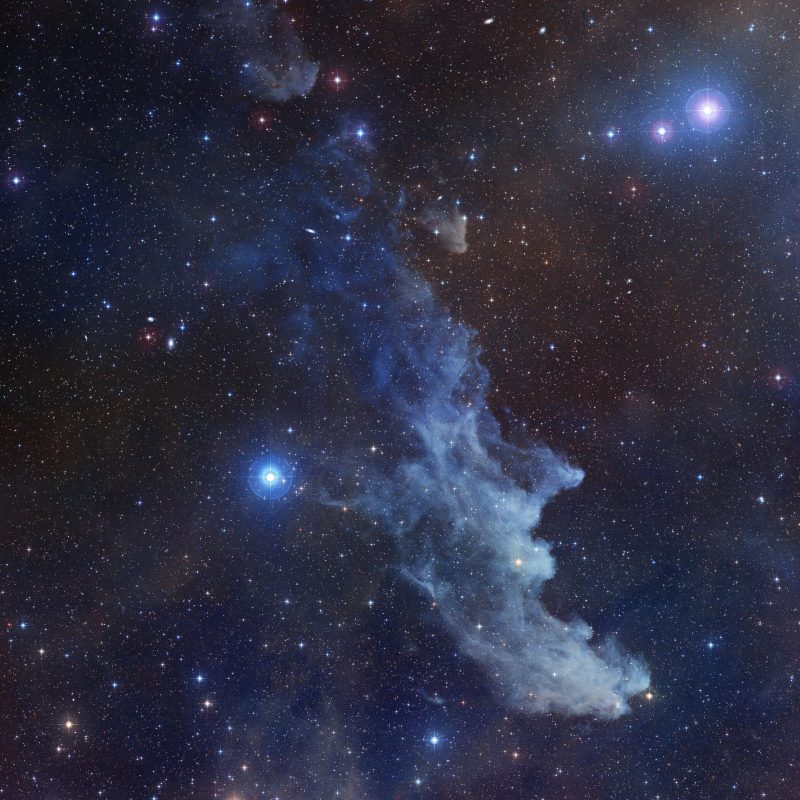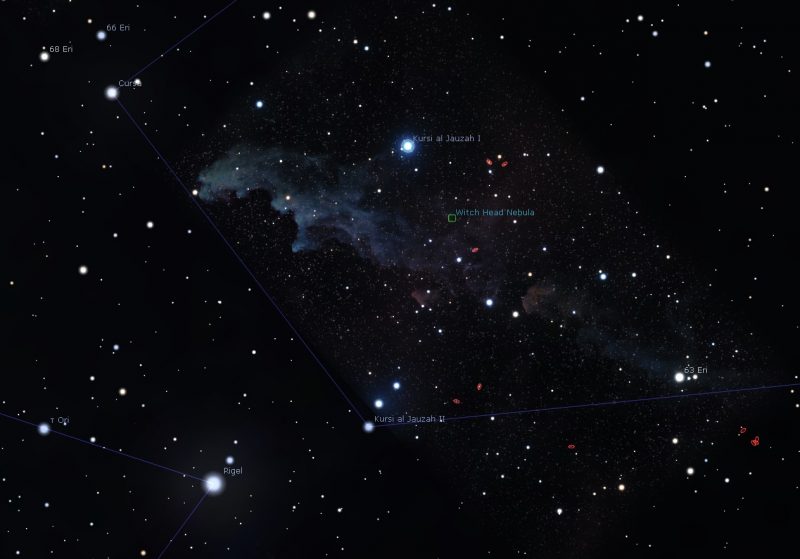
Witch Head Nebula
It’s that time of year again, when creepy-crawlies and spine-chilling images tickle our imaginations. One of the spookiest views in the night sky is of the Witch Head Nebula, with the catalog designation IC 2118. The Witch Head Nebula is located near Orion’s brightest star, Rigel. But Rigel is just outside the image above, so the witch gets all the attention. If the field of view was large enough to include the blue supergiant star, you could see that the witch appears to be gazing at Rigel.
The constellation Orion, accompanied by the Witch Head Nebula, rises from the eastern horizon before midnight on Halloween. This lengthy nebula spans 70 light-years across and lies 900 light-years from Earth. The nebula is extraordinarily faint, at magnitude 13, so it can only be spotted with large telescopes.
Scientists think it might be an ancient supernova remnant. The Witch Head Nebula is categorized as a reflection nebula, or one that shines with the aid of a nearby star. In this case, Rigel shines its bright light on the gas and dust to create the reflection that we see. The dust reflects more blue light than red, which gives it its eerie purplish-blue hue.

Want to learn how to “capture the witch” on film? Try this post from the Galactic Hunter.
Bottom line: The Witch Head Nebula rises near the star Rigel in Orion on Halloween night, but you need a telescope to see it.
The post Witch Head Nebula is perfect on October nights first appeared on EarthSky.
from EarthSky https://ift.tt/XGsa6vA

Witch Head Nebula
It’s that time of year again, when creepy-crawlies and spine-chilling images tickle our imaginations. One of the spookiest views in the night sky is of the Witch Head Nebula, with the catalog designation IC 2118. The Witch Head Nebula is located near Orion’s brightest star, Rigel. But Rigel is just outside the image above, so the witch gets all the attention. If the field of view was large enough to include the blue supergiant star, you could see that the witch appears to be gazing at Rigel.
The constellation Orion, accompanied by the Witch Head Nebula, rises from the eastern horizon before midnight on Halloween. This lengthy nebula spans 70 light-years across and lies 900 light-years from Earth. The nebula is extraordinarily faint, at magnitude 13, so it can only be spotted with large telescopes.
Scientists think it might be an ancient supernova remnant. The Witch Head Nebula is categorized as a reflection nebula, or one that shines with the aid of a nearby star. In this case, Rigel shines its bright light on the gas and dust to create the reflection that we see. The dust reflects more blue light than red, which gives it its eerie purplish-blue hue.

Want to learn how to “capture the witch” on film? Try this post from the Galactic Hunter.
Bottom line: The Witch Head Nebula rises near the star Rigel in Orion on Halloween night, but you need a telescope to see it.
The post Witch Head Nebula is perfect on October nights first appeared on EarthSky.
from EarthSky https://ift.tt/XGsa6vA

Aucun commentaire:
Enregistrer un commentaire